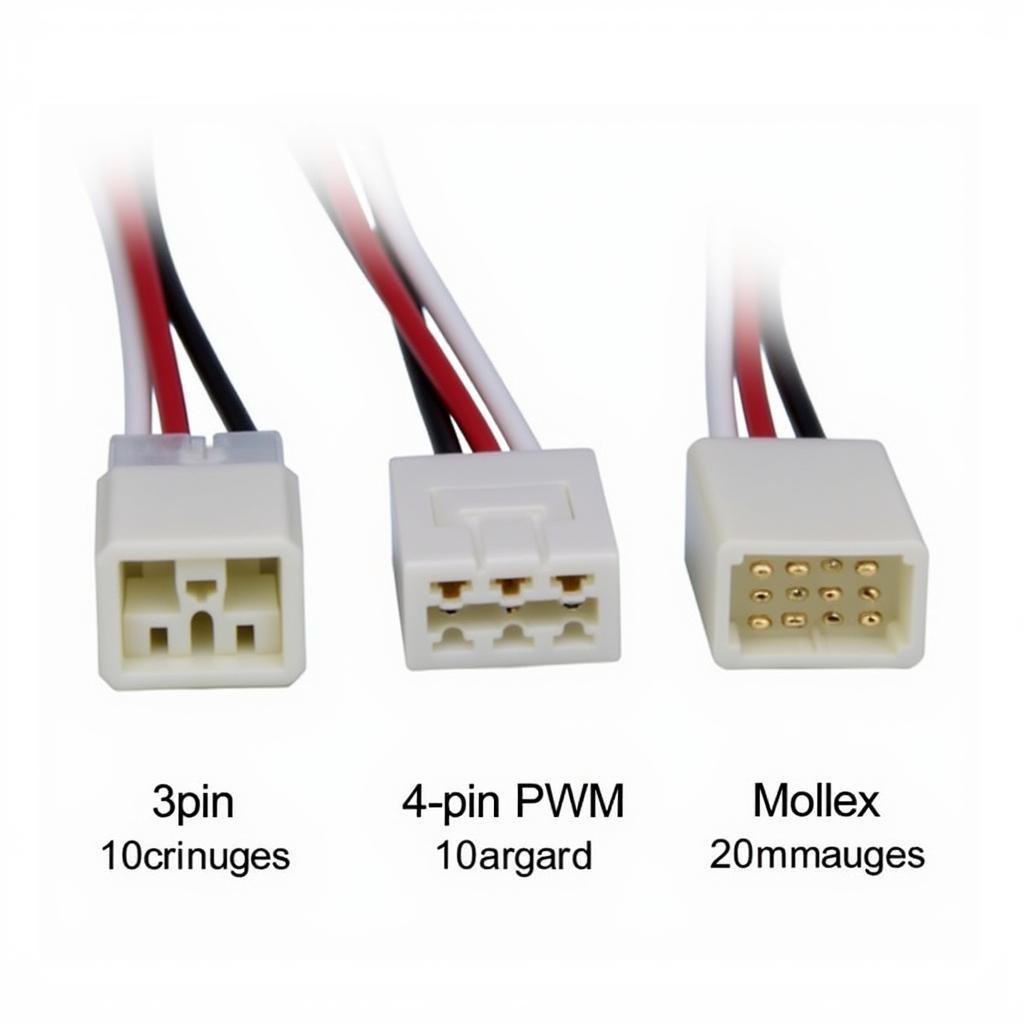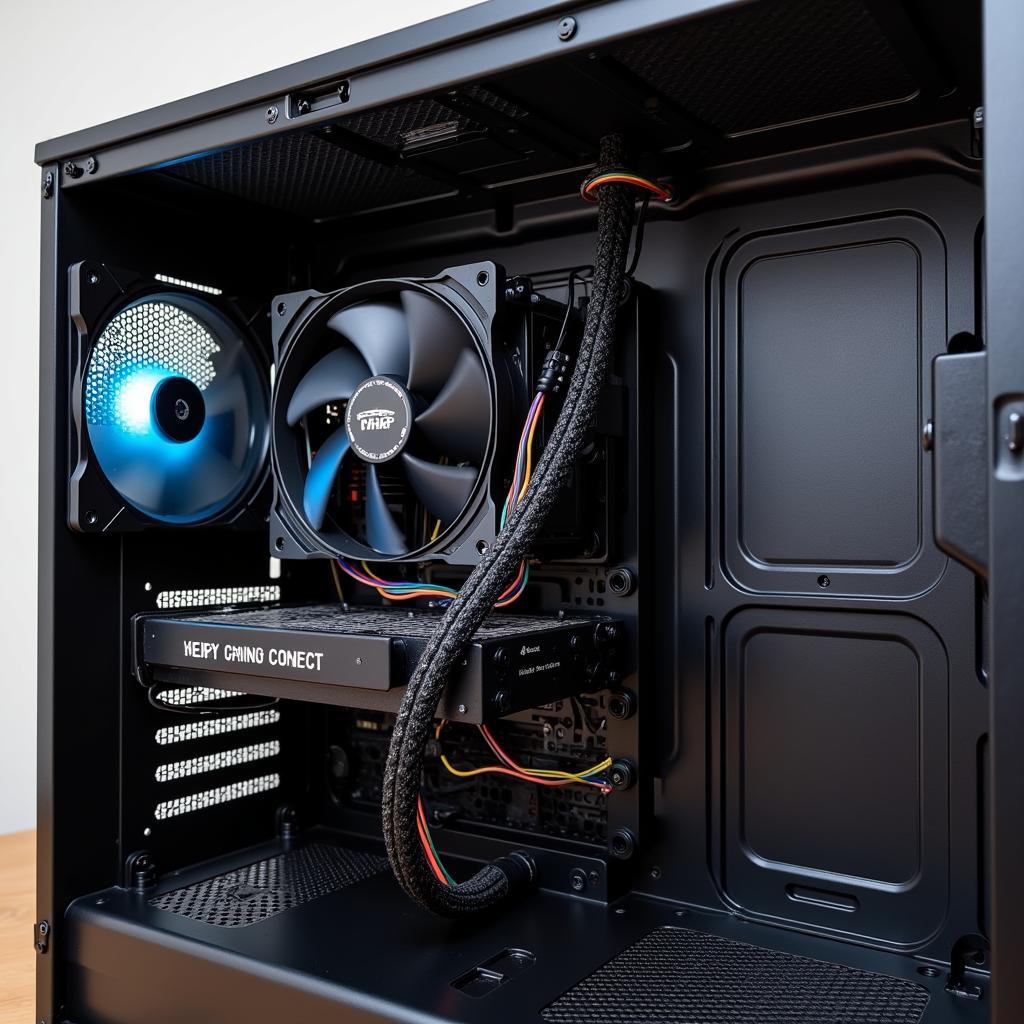Daisy chaining computer fans is a popular method for connecting multiple fans to a single power source or control header on your motherboard. This simplifies cable management and ensures all connected fans operate at the same speed or curve. This guide will explore the benefits, drawbacks, and best practices for daisy chaining your PC fans for optimal cooling performance. We’ll also delve into the different types of connectors and cables you’ll encounter. A well-managed cooling system is essential for the longevity and performance of your computer components. Let’s dive in!
You’ve likely heard of the fan hub 4 pin which can greatly assist in managing multiple fans. Daisy chaining provides a similar advantage, although it has some key differences that we’ll discuss. Effectively managing airflow and cooling in your PC can significantly improve its performance and stability.
Understanding Daisy Chaining
Daisy chaining involves connecting multiple fans together in a series, much like the links of a chain. Each fan typically has two connectors: one for input power and one for output. The output connector of the first fan connects to the input of the second, and so on. This allows you to power multiple fans from a single power source, reducing cable clutter and simplifying your build.
Why Daisy Chain Your Fans?
There are several reasons why you might choose to daisy chain your fans:
- Simplified Cable Management: Fewer cables running to your motherboard results in a cleaner and more aesthetically pleasing build. This is especially beneficial in smaller cases.
- Synchronized Fan Control: When daisy-chained to the same header, fans typically operate at the same speed or follow the same fan curve. This ensures a consistent cooling approach across your system.
- Expand Limited Headers: If your motherboard has a limited number of fan headers, daisy chaining allows you to connect more fans than you would otherwise be able to.
Potential Drawbacks of Daisy Chaining
While daisy chaining offers several advantages, it’s important to be aware of the potential drawbacks:
- Power Limitations: Each power source has a maximum current output. Connecting too many fans in a chain can overload the circuit, potentially damaging the fans or the power supply.
- Signal Degradation (PWM): While less common with modern hardware, daisy chaining PWM fans can sometimes lead to signal degradation, affecting the accuracy of fan speed control.
Types of Fan Connectors and Cables
Understanding the different types of fan connectors is crucial for successful daisy chaining. Here are some of the most common types:
- 3-Pin Connectors: These connectors provide power and ground, as well as a tachometer wire for monitoring fan speed. However, they do not support PWM control.
- 4-Pin PWM Connectors: These connectors add a fourth wire for Pulse Width Modulation (PWM) control, allowing for more precise fan speed adjustments.
- Molex Connectors: These are older, larger connectors typically used for powering hard drives and other peripherals. They can also be used to power fans, but they do not offer speed control.
Consider the jack nguồn molex chia ra 4 fan máy tính if you are working with Molex connections and need to power multiple fans. This can be a practical alternative to daisy chaining directly from a Molex connector.
Best Practices for Daisy Chaining
To avoid potential issues when daisy chaining your fans, consider the following best practices:
- Consult Your Motherboard Manual: Your motherboard manual will specify the maximum current output of each fan header. Do not exceed this limit.
- Use High-Quality Cables: Using high-quality cables will minimize the risk of signal degradation and ensure reliable power delivery. Check out the corsair fan 90 x 15 for a reliable option.
- Monitor Fan Speeds: After setting up your daisy chain, monitor your fan speeds to ensure they are operating correctly.
- Consider a Fan Hub: If you need to connect a large number of fans, a fan hub 4 pin may be a better solution than daisy chaining.
 Different Types of Fan Connectors
Different Types of Fan Connectors
Choosing the Right Fans for Daisy Chaining
Selecting the right fans can also influence the effectiveness of daisy chaining. High-quality fans like the fan case cooler master 120mm sickleflow x are designed with efficient operation in mind. While fan nzxt fz-120mm offers another good option to explore. Remember to consider airflow direction and static pressure when selecting fans for your system.
 PC Case with Daisy Chained Fans
PC Case with Daisy Chained Fans
Conclusion
Daisy chaining computer fans is a valuable technique for simplifying cable management and optimizing cooling performance. By understanding the different connector types, adhering to best practices, and choosing the right fans, you can effectively daisy chain your fans for a cleaner, cooler, and more efficient PC build. Remember to always consult your motherboard manual and monitor your fan speeds after setup to ensure optimal performance.
FAQs
- Can I daisy chain 3-pin fans? Yes, you can daisy chain 3-pin fans.
- Can I daisy chain 4-pin PWM fans? Yes, but be mindful of potential signal degradation.
- How many fans can I daisy chain together? Consult your motherboard manual for the maximum current draw on each header.
- What happens if I overload a fan header? You risk damaging the fans or the power supply.
- Is daisy chaining better than using a fan hub? It depends on your specific needs and number of fans.
- Can I mix and match different fan brands in a daisy chain? Generally, yes, as long as they use compatible connectors.
- What if my fan stops spinning after daisy chaining? Check the connections and ensure you haven’t exceeded the power limit of the header.
For further assistance, please contact us at Phone Number: 0903426737, Email: fansbongda@gmail.com Or visit us at: Tổ 9, Khu 6, Phường Giếng Đáy, Thành Phố Hạ Long, Giếng Đáy, Hạ Long, Quảng Ninh, Việt Nam. We have a 24/7 customer support team.


